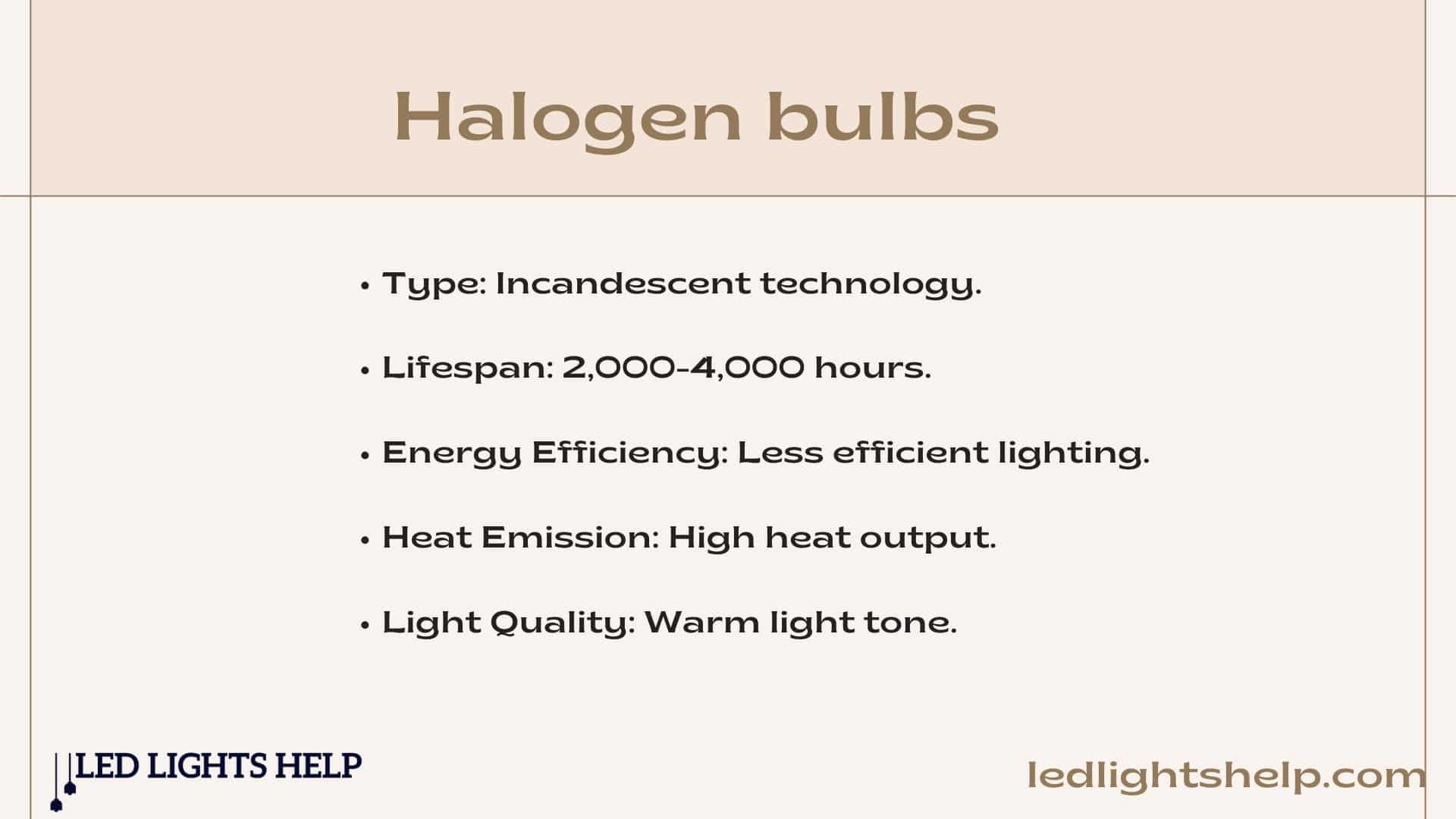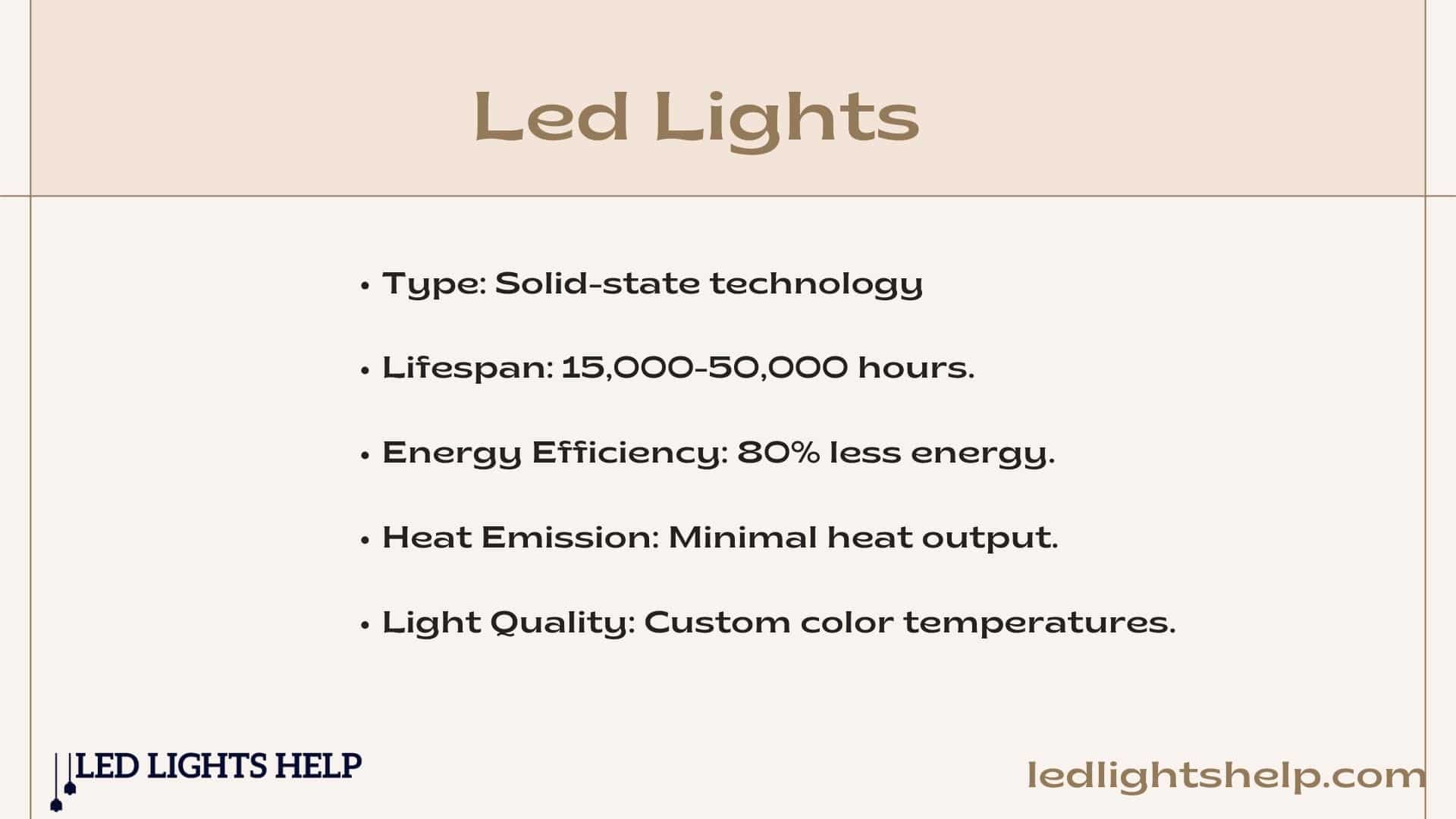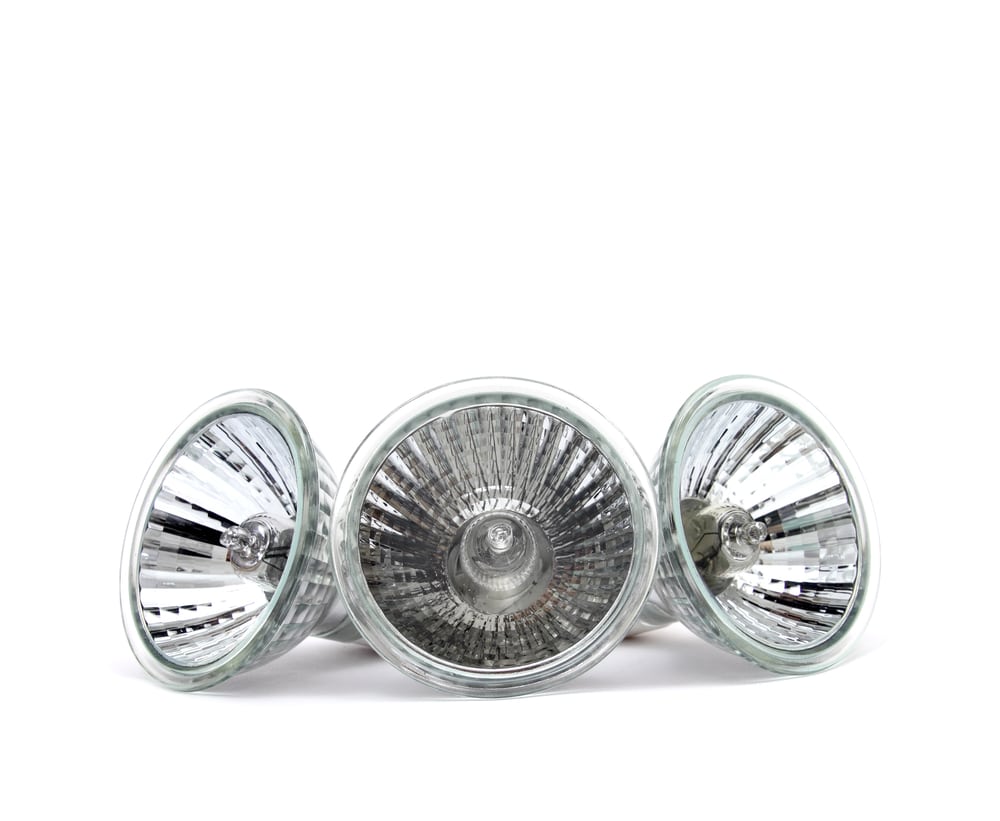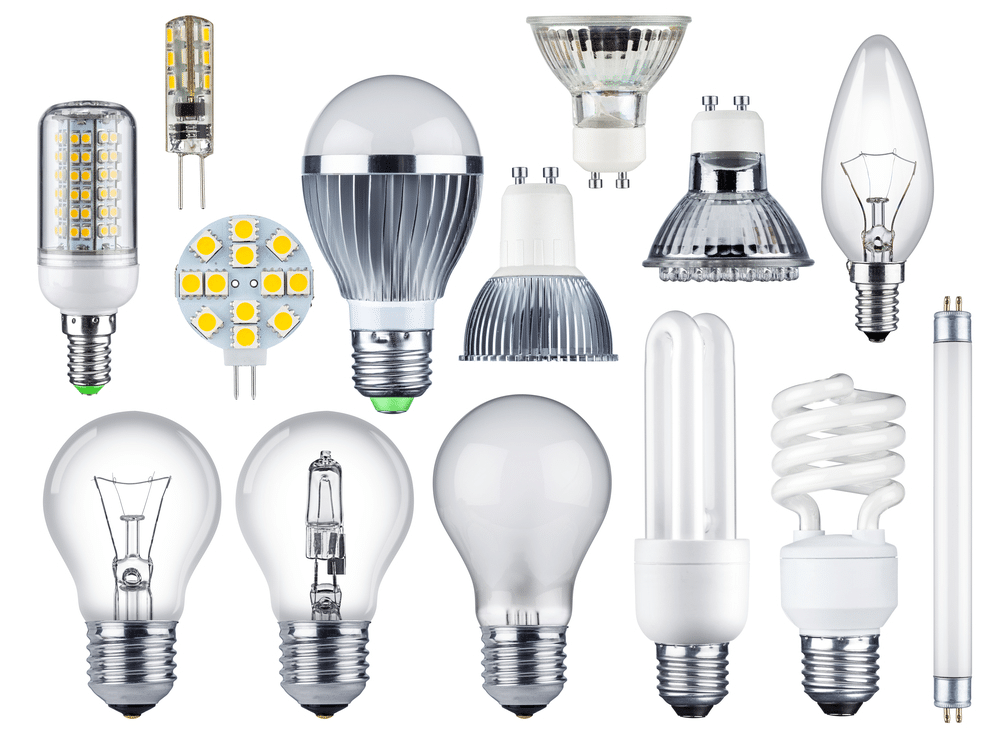Table of Contents
What Are Halogen Light Bulbs?
 Halogen light bulbs are a type of incandescent bulbs that use a tungsten filament like traditional bulbs, but with one key difference: they contain a small amount of halogen gas. This gas increases the efficiency of the halogen light bulb by allowing the filament to burn brighter and last longer. The halogen bulbs also tend to produce a more intense type of light, which is often preferred in environments where bright, sharp lighting is necessary.
The design of halogen bulbs vs LED emphasizes their similarity to traditional incandescent options. In fact, the warm light of halogen lighting closely resembles that of older incandescent bulbs, making them a common choice for those who prefer that familiar glow. However, while halogen bulbs offer better efficiency than traditional incandescent bulbs, they still lag behind LED lights in terms of energy consumption.
Halogen light bulbs are a type of incandescent bulbs that use a tungsten filament like traditional bulbs, but with one key difference: they contain a small amount of halogen gas. This gas increases the efficiency of the halogen light bulb by allowing the filament to burn brighter and last longer. The halogen bulbs also tend to produce a more intense type of light, which is often preferred in environments where bright, sharp lighting is necessary.
The design of halogen bulbs vs LED emphasizes their similarity to traditional incandescent options. In fact, the warm light of halogen lighting closely resembles that of older incandescent bulbs, making them a common choice for those who prefer that familiar glow. However, while halogen bulbs offer better efficiency than traditional incandescent bulbs, they still lag behind LED lights in terms of energy consumption.
What Are LED Lights?
 LED lights, or Light Emitting Diodes, represent a modern and highly efficient alternative to halogen light bulbs vs LED. Instead of using a tungsten filament to produce light, LED lights emit light through the movement of electrons within a semiconductor. This results in significantly less heat being produced and much lower power consumption compared to halogen lighting.
The technology behind LED bulbs makes them an increasingly popular choice for both residential and commercial spaces. Not only do they provide excellent energy savings, but they also have a longer lifespan, often lasting up to 25 times longer than halogen bulbs. This can lead to substantial energy costs savings in the long run.
LED lights, or Light Emitting Diodes, represent a modern and highly efficient alternative to halogen light bulbs vs LED. Instead of using a tungsten filament to produce light, LED lights emit light through the movement of electrons within a semiconductor. This results in significantly less heat being produced and much lower power consumption compared to halogen lighting.
The technology behind LED bulbs makes them an increasingly popular choice for both residential and commercial spaces. Not only do they provide excellent energy savings, but they also have a longer lifespan, often lasting up to 25 times longer than halogen bulbs. This can lead to substantial energy costs savings in the long run.
Energy Efficiency – Halogen vs LED
One of the most important factors when deciding between halogen vs LED light bulbs is energy efficiency. LED lights are widely regarded as the most energy-efficient lighting option available today. They convert a higher percentage of electrical energy into visible light, whereas halogen light bulbs waste a considerable amount of energy in the form of heat. In terms of power consumption, LED lights typically use about 80% less energy than halogen bulbs. This means that switching to LED lights can drastically reduce your electricity bills and overall energy consumption. Over time, the difference in efficiency makes LED bulbs the clear winner for those looking to minimize their environmental impact and save on energy costs. While halogen bulbs offer better efficiency compared to traditional incandescent options, they still don’t come close to matching the energy savings provided by LED bulbs. In fact, halogen lamps vs LED lamps use more energy per lumen of light produced, which adds up to higher energy expenses over time.Lifespan – Halogen vs LED
Another critical difference between halogen vs LED light bulbs is lifespan. Halogen bulbs generally last around 2,000 to 3,000 hours, which is a considerable improvement over traditional incandescent bulbs but still pales in comparison to LED lights. LED bulbs, on the other hand, can last anywhere from 25,000 to 50,000 hours. This extended lifespan translates into fewer replacements and less maintenance, making LED lights a more cost-effective option in the long run. Over time, the lower power consumption and fewer replacements make LED lights a much more budget-friendly choice.
Light Quality and Color Temperature
When considering halogen bulbs vs LED light bulbs, the quality of light is another important factor. Halogen bulbs are known for producing a warm, natural light that is similar to sunlight. This makes them a popular choice for spaces where accurate color rendering is crucial, such as art studios or retail environments. LED lights, however, offer a wider range of color temperatures, making them more versatile for different settings. From warm white to cool daylight, LED bulbs can produce light that mimics anything from the soft glow of the evening to the crisp, bright light of noon. The ability to choose different color temperatures allows you to customize the lighting to suit your preferences or the needs of the space. For those who prefer the warm glow of halogen bulbs, it’s worth noting that many LED bulbs are available in similar color temperatures, allowing you to enjoy the benefits of energy efficiency without sacrificing the quality of light.Heat Production
A key drawback of halogen bulbs is the amount of heat they generate. Because halogen light bulbs use a tungsten filament to produce light, they also release a significant amount of heat, making them less efficient and potentially dangerous in certain settings. In contrast, LED lights produce very little heat, making them safer and more efficient. If you’re looking for lighting that minimizes heat production, LED lights are the clear choice. The reduced heat output of LED bulbs not only increases their safety but also helps to extend their lifespan, as they are less likely to be damaged by excess heat.


